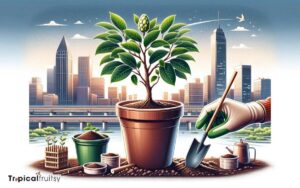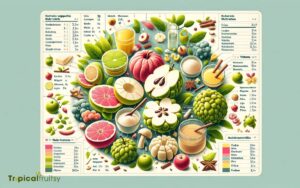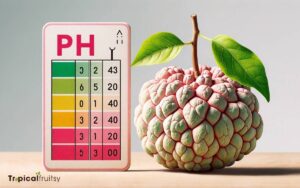How to Plant Custard Apple Seeds? 6 Easy Steps!
To plant custard apple seeds, extract seeds from a ripe fruit, clean them, and let them dry for a few days.
Plant the seeds 1/2 inch deep in a pot filled with seed starting mix, ensuring the soil remains moist.
Place the pot in a warm, sunny area, and wait for germination, which typically occurs within 3-4 weeks. Custard apple, also known as Annona reticulata, can be grown from seeds.
Here are detailed steps:
Remember, custard apple trees grown from seeds may not produce fruit identical to the parent
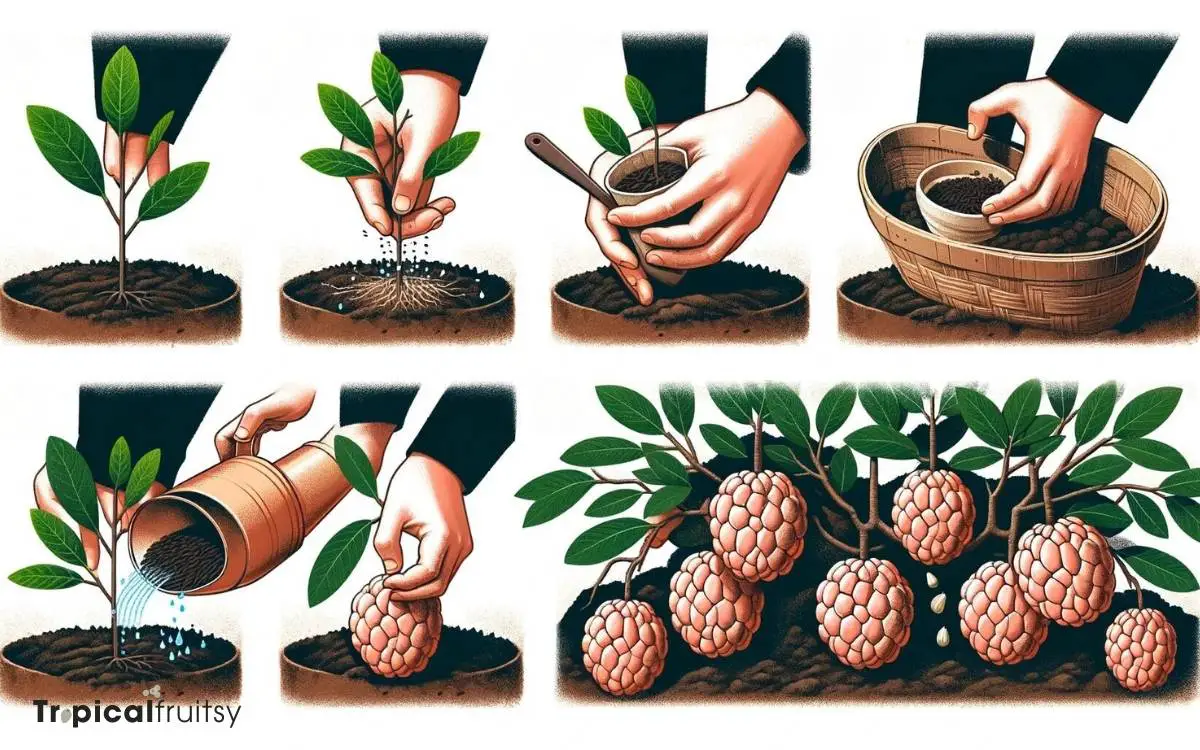
Key Takeaway
Step 1: Selecting Quality Seeds
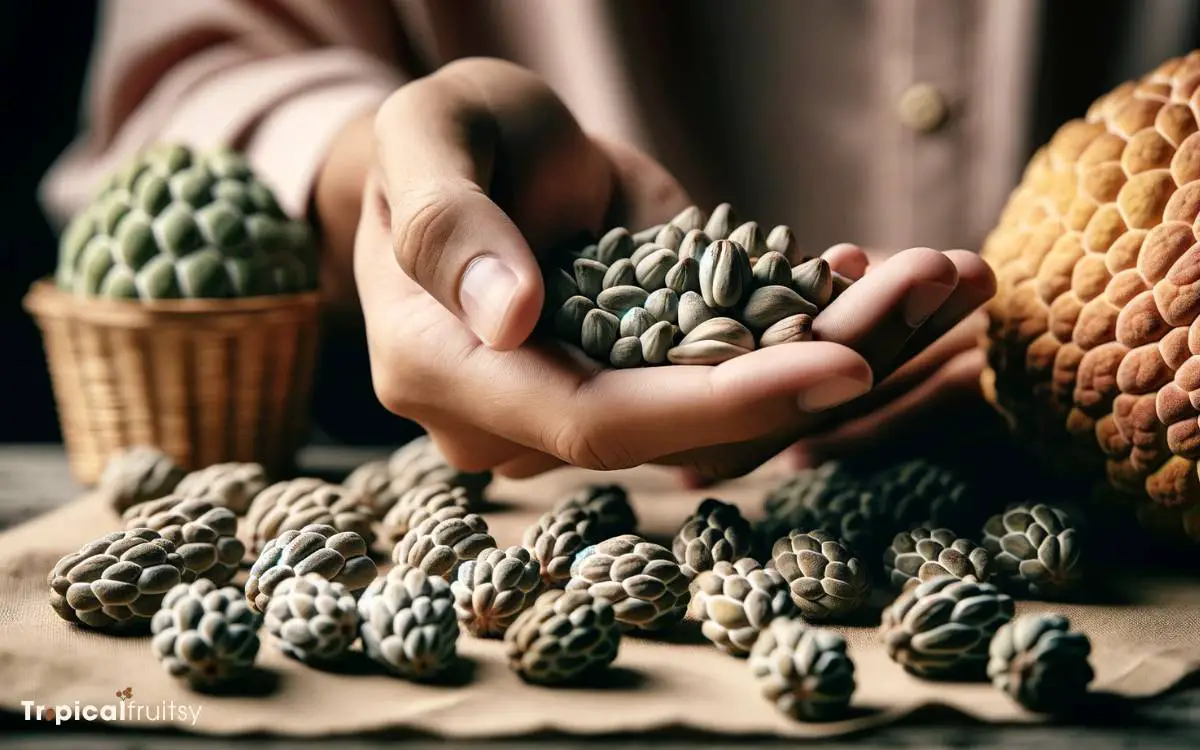
In preparing to plant custard apple seeds, I’ve found that selecting seeds with a plump, unblemished appearance and a dark, uniform color is crucial for successful germination.
Size and weight are indicative of maturity; therefore, I discard any seeds that seem underdeveloped or exhibit noticeable damage. I prefer sourcing seeds from ripe, healthy fruits, as this enhances the probability of germination.
To ensure viability, I conduct a float test, placing the seeds in water. Viable seeds typically sink, while nonviable ones float.
I then carefully dry the seeds that pass this test for 24 hours, avoiding direct sunlight which can damage their delicate structures.
This meticulous selection process maximizes the chances of cultivating robust custard apple plants.
Step 2: Preparing the Seeds
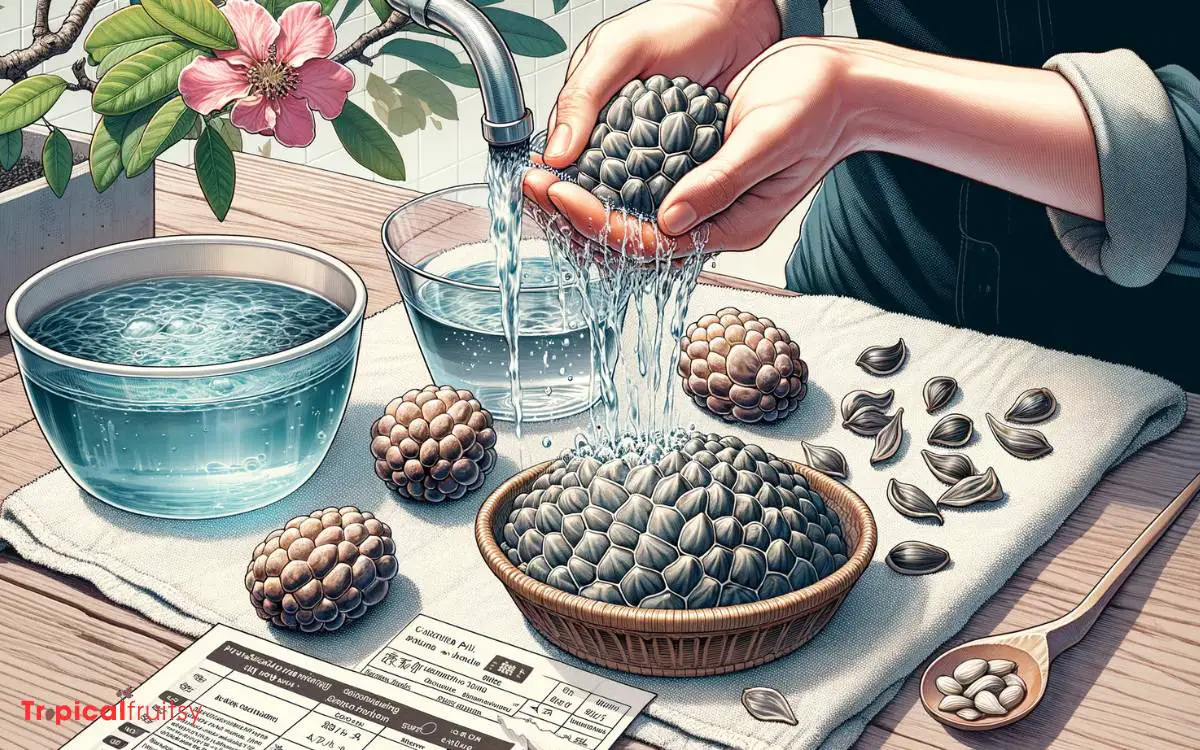
Once the seeds have dried and their viability is confirmed, I move on to the preparation stage, which involves scarifying the seeds to enhance water absorption and promote germination.
To do this, I use a file or a piece of fine-grit sandpaper to gently wear down one area of the seed coat. I’m careful not to penetrate too deeply, as damaging the inner seed can inhibit growth.
This process, known as scarification, allows water to penetrate the tough outer shell, signaling the seed to begin the germination process. I then soak the seeds in warm water for 24 hours to further improve germination rates.
With the seeds prepared, I’m ready to consider the optimal soil and container choices for planting.
Step 3: Soil and Container Choices
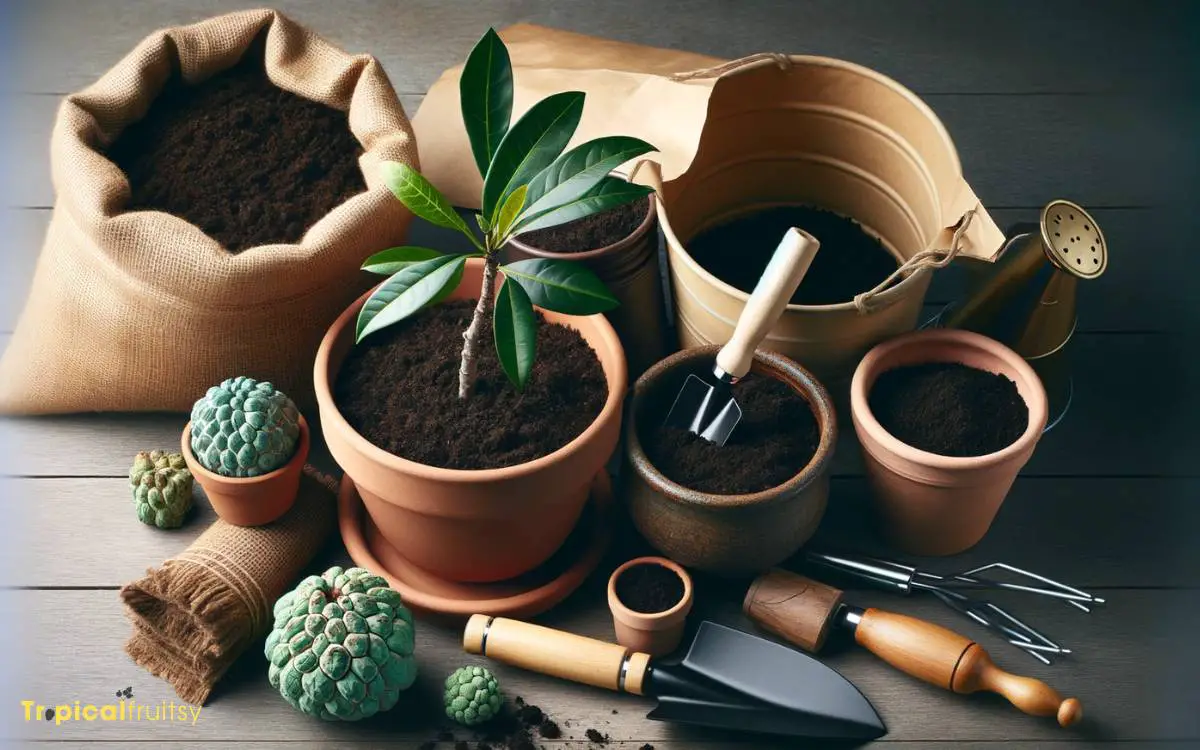
Selecting the right soil and container is crucial for the successful germination of custard apple seeds. The soil must provide the right balance of drainage and moisture retention to foster optimal root development.
It’s not just about grabbing any old potting mix; I’ve to choose one tailored for seedlings or make my own mix.
Here’s a breakdown of my choices:
- Soil Type: A well-draining, fertile soil with a mix of peat, perlite, and vermiculite works best. This ensures aeration and moisture control.
- Pot Size: Initially, a small pot about 3-4 inches deep suffices, allowing the seedling to establish without wasting space.
- Material: Plastic pots are lightweight and retain moisture well, but I can opt for biodegradable pots to transplant directly into the ground later, minimizing root disturbance.
Step 4: Planting the Seeds
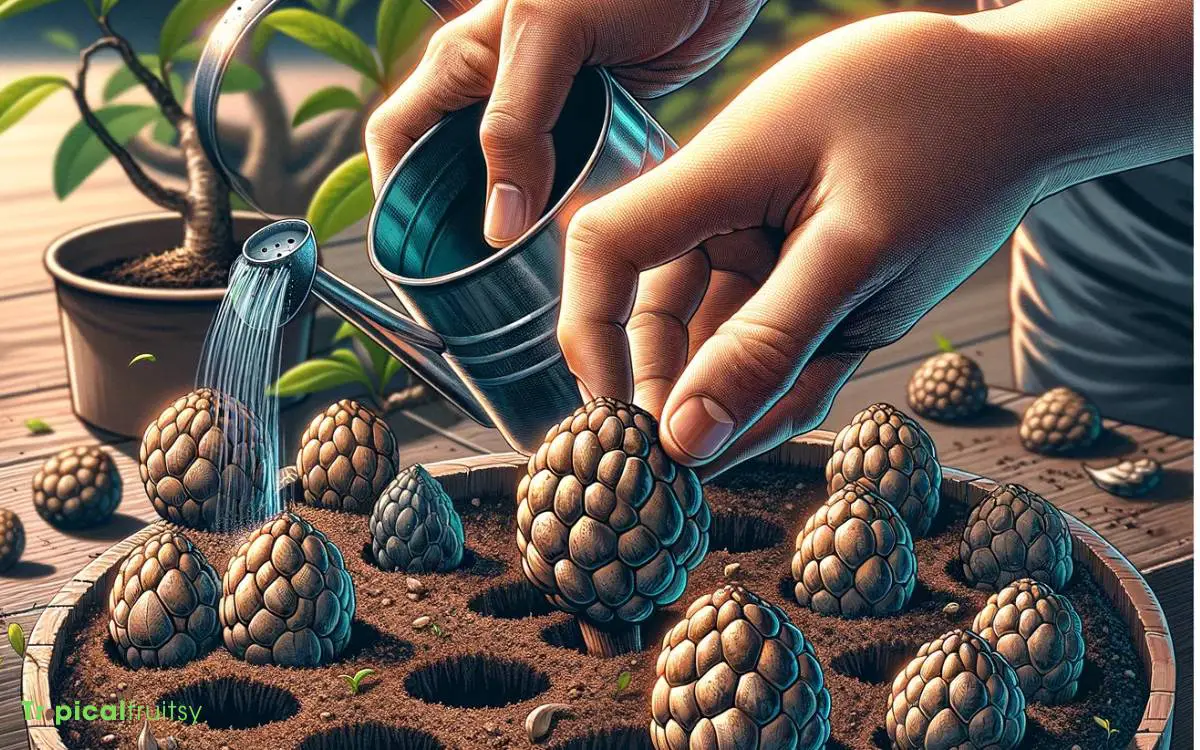
After choosing the right soil and container, I’ll now carefully plant the custard apple seeds at the appropriate depth. It’s crucial to bury the seeds about half an inch to one inch deep, ensuring proper coverage without hindering germination.
I use my finger or a small tool to make a hole, then I place the seed inside and gently cover it with soil.
I’m meticulous about spacing; custard apple seeds need about an inch between them to allow for adequate root development and reduce competition for nutrients.
Once planted, I press the soil down lightly around the seeds to eliminate air pockets and secure them in place.
With the seeds now sown, I’ll turn my attention to optimal watering practices to encourage sprouting.
Step 5: Optimal Watering Practices
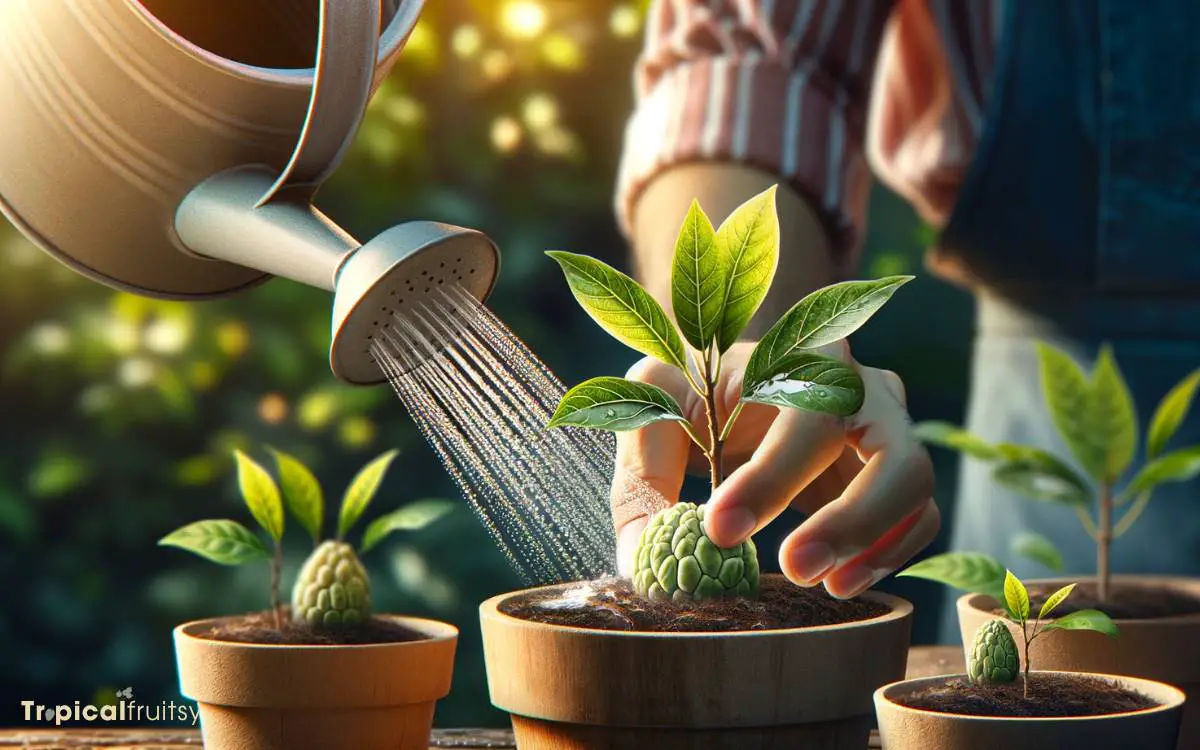
I’ll now focus on ensuring my custard apple seeds receive the right amount of water to thrive without becoming waterlogged. Overwatering is as harmful as underwatering, so I’m meticulous about this step.
Here’s what I do:
- Watering Frequency: I check the soil moisture daily, watering only when the top inch feels dry to the touch. This usually means watering once every few days, but I adjust based on temperature and humidity.
- Water Quantity: I carefully use about a quarter to a half cup of water, ensuring it’s enough to reach the roots without causing standing water.
- Drainage: I’ve chosen pots with good drainage and use a well-draining soil mix to prevent water retention that could lead to root rot.
Are the Steps for Planting Custard Apple Seeds the Same as Growing a Custard Apple Tree?
Yes, the steps for planting custard apple seeds are the same as growing a custard apple tree. To grow a custard apple tree, follow the specific growing custard apple tree steps, which include planting seeds in well-draining soil, providing consistent moisture, and keeping the tree warm and protected from frost.
Step 6: Seedling Care and Maintenance
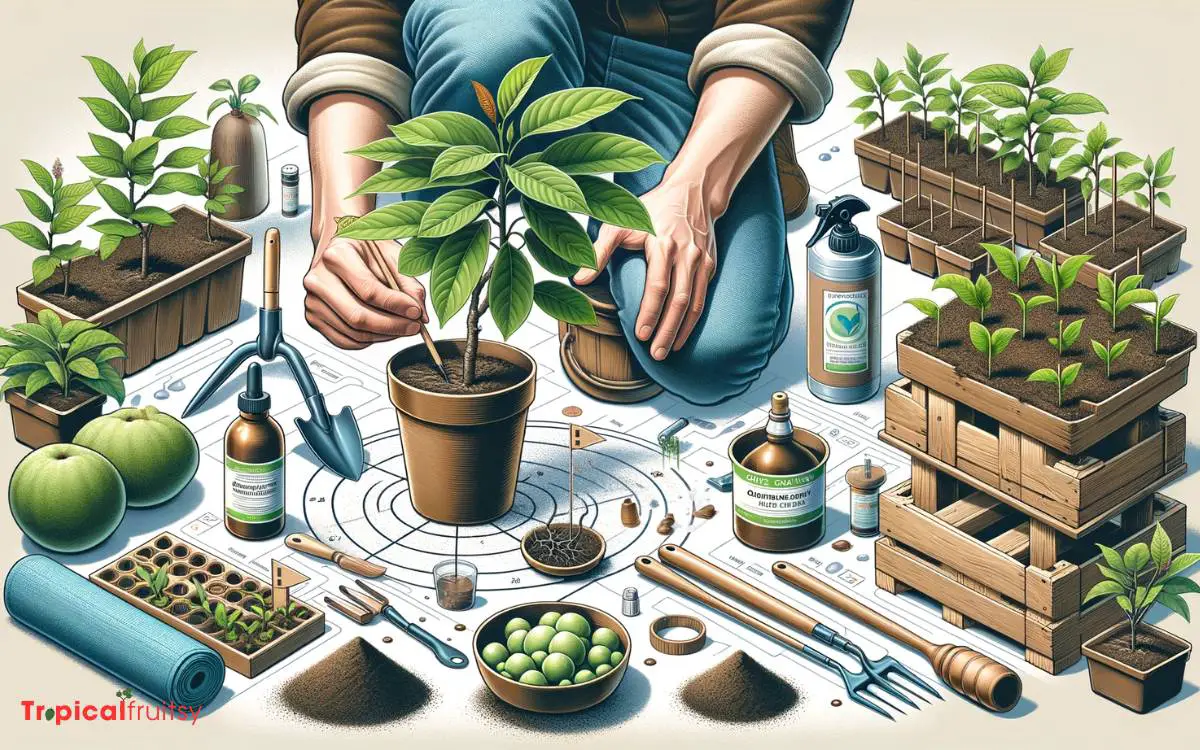
Once your custard apple seeds have germinated, it’s crucial to manage their transition to robust seedlings. I’ll guide you through adjusting watering frequency to ensure optimal soil moisture levels, avoiding over or under-watering.
Additionally, I’ll outline effective pest management strategies to protect your seedlings from common threats.
Watering Frequency
In caring for custard apple seedlings, I’ve found that a consistent watering schedule is crucial to their development.
Here’s a distilled guide:
- Initial Moisture: Keep the soil consistently moist after planting the seeds. This means watering lightly but frequently to maintain an even level of moisture, without letting the soil become waterlogged.
- Seedling Stage: As they sprout, reduce watering to avoid over-saturation. Allow the top layer of soil to dry out slightly between waterings to encourage strong root growth.
- Mature Seedlings: Once established, custard apple seedlings prefer deep, less frequent watering. This practice promotes a robust root system capable of sustaining the plant as it matures.
Adhering to this regimen ensures your seedlings have the necessary hydration to thrive without succumbing to root rot or drought stress.
Pest Management
During the growth of custard apple seedlings, I’ve learned it’s essential to vigilantly monitor for pests, as early detection can prevent infestations that may harm or even kill the young plants.
Identifying the common pests and their symptoms is critical. Aphids, for example, cause curled leaves and may transmit viruses. Mealybugs, another common pest, leave a white cottony substance on leaves and stems.
Here’s a quick guide:
| Pest | Symptom |
|---|---|
| Aphids | Curled leaves |
| Mealybugs | White cottony substance |
| Spider mites | Yellow, speckled leaves |
| Scale insects | Brown, hard shell spots |
I use organic insecticides like neem oil as a proactive measure, ensuring it’s applied in the recommended dosages to avoid damage to the seedlings.
Transplanting to Outdoor Environment
Why should I wait until my custard apple seedlings are sturdy and the threat of frost has passed before transplanting them outdoors?
This careful timing prevents shock and damage to the young plants, which could compromise their development and fruiting potential.
Here’s what I take into account:
- Root Establishment: I ensure the roots are well-established and resilient, able to handle the transition to a less controlled environment.
- Weather Conditions: I wait for consistent warm weather, post-frost, to avoid exposing the seedlings to temperatures that could cause harm.
- Plant Size: I prefer the seedlings reach a certain size, displaying multiple sets of true leaves, which indicates a readiness for outdoor growth.
Conclusion
Nurturing custard apple seeds into thriving trees is a labor of love. Remember, ‘patience is a virtue’—it’s essential as you wait for germination and growth.
I’ve prepared the seeds, chosen the right soil and container, and mastered the art of watering. With diligent care, my seedlings have flourished.
Soon, I’ll transplant them outdoors, where they’ll reach their full potential. The journey from seed to fruit is meticulous, but the sweet reward is worth every precise step.


